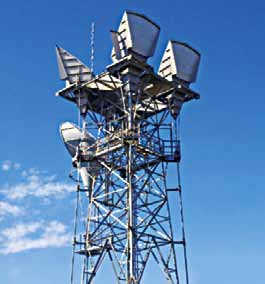LTE technology is a completely packet-based protocol and radio access technology. Its core network, leveraging flexible bandwidth, achieves much better spectral efficiency (bps/Hz) and delivers a throughput of greater than 100 Mbps (for 20MHz FDD system using 2×2 spatial multiplexing) by using higher-order modulation and multiple-input multiple-output (downlink and uplink).

Matharu adds, “In light of the above argument, niche deployments of 20MHz WiMAX cellular systems should also be considered 4G. However, LTE framing structure is better for achieving a higher throughput and lower latency, besides the benefits of a more power-efficient user terminal uplink technology. We expect LTE to replace majority of the WiMAX deployments in the coming years.”
Dr Borkar concurs, “The initial LTE-Advanced systems are expected to deploy by the year-end. Whereas WiMAX may have its niche applications like backhaul, from access viewpoint, LTE will become the norm of the future. Even the current 3GPP2 US standard based 3G operators like Verizon have abandoned the CDMA2000 evolutionary path and embraced the 3GPP LTE 4G standard.”
The flavours of LTE—TDD and FDD
“Globally, there is one harmonised standard for LTE that encompasses two modes—TDD and FDD,” remarks Dr Lakshminath Dondeti, director, engineering-technical standards, Qualcomm India.
LTE involves duplexing of uplink and downlink radio signals. The duplexing scheme is responsible for managing simultaneous transmission and reception without interference between the two. To handle this, signals for transmission and reception can be separated using either time or frequency—the former is called time-division duplexing (TDD), while the latter is frequency-division duplexing (FDD).
FDD uses a paired set of frequency blocks—one for downlink transmission and the other for uplink transmission. TDD works on only one frequency block, but uses short alternating bursts of transmission and reception.
FDD and TDD are different technologies. FDD is better suited for voice, while TDD is better suited for data. In data, there is usually more of reception or download than upload, and the system can be tweaked to allow greater download time and shorter upload time.
“Most deployments of cellular systems including LTE use FDD operation because of its simplicity of transceiver designs. Some countries like India (Bharti Airtel) and China (Chine Mobile) have selected TDD for the 4G LTE network because of its capabilities of dynamic adaptation of downlink and uplink bandwidths. WiMAX deployments from their early version have embraced TDD operation,” explains Dr Borkar.
“In India, LTE TDD has been deployed initially in the 2.3GHz spectrum band. The Global TD-LTE Initiative (GTI) has been formed to support closer network and device integration of LTE TDD and FDD. It is driven by several major wireless operators from around the world, working closely with GSMA and NGMN. Qualcomm has multimode chipsets that integrate both LTE TDD and LTE FDD, and inter-work with 3G HSPA and EV-DO,” says Dr Dondeti.
IP-based architecture—pros and cons
“Circuit-switched networking is inefficient for data traffic. With Internet data constituting a significant fraction of mobile traffic, it is more efficient to deploy packet-switched IP technology. IP also enables seamless network convergence. There are really no disadvantages of IP or packet switch, except perhaps that network security issues need to be more tightly managed in an IP network,” says Dr Karandikar, who is emphatically in favour of packet-switching.
[stextbox id=”info” caption=”4G problem areas”]Higher susceptibility to inter-cell interference
Higher variation in the instantaneous power (due to OFDM-based architecture) that impacts power amplifier efficiency
Incompatibility with previous generations
Over 40 frequency bands make global roaming difficult
Poor voice support
High cost of embracing LTE, including high auction costs for acquiring spectrum, lack of economy of scale to make available reasonably-priced user devices, and putting together the backhaul infrastructure
Need to set up newer operations and management systems, including provisioning, performance optimisation, revenue realisation, fault handling and maintenance, security management, etc[/stextbox]
An all-IP network can very effectively handle multiple applications and services, e.g., voice, video and data. The power of a unified IP multimedia system architecture can be exploited to efficiently support the QoS requirements of such varied applications and services. Packet transport provides much better resource utilisation than circuit-switched network.
However, all-IP systems have a flipside too. “The primary disadvantages for all-IP systems are how to recover the huge investments in legacy 2G and 3G systems, not stranding the vast number of existing user devices in the marketplace, and inability to provide the high bar of voice reliability and quality. The VoIP alternative is primarily statistical in nature and lacks the advantages of traditional circuit-switched based voice, e.g., quality, deterministic behaviour in terms of latency and routing, and advanced supplementary services,” says Dr Borkar.






